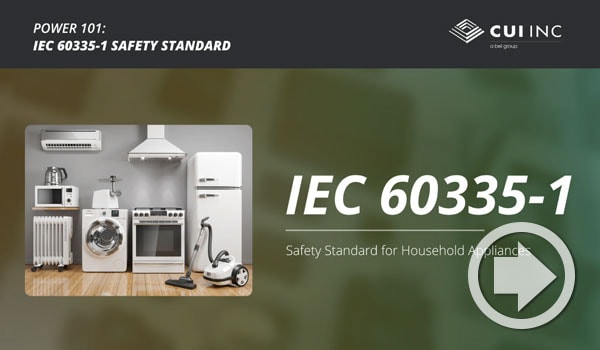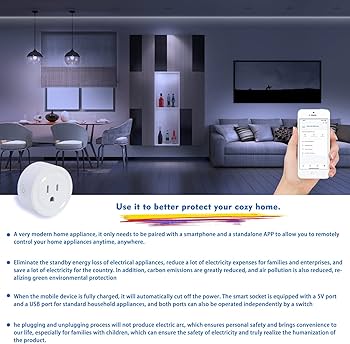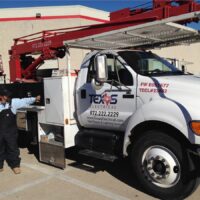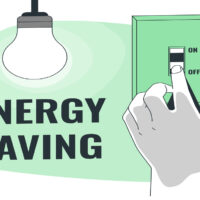Electrical Appliance Safety Standards ensure that electrical devices operate safely and efficiently. They protect users from potential hazards such as electric shocks and fires.
Electrical Appliance Safety Standards are crucial for the safe use of household and industrial electrical devices. These standards help prevent accidents by ensuring that appliances are designed and manufactured to strict safety guidelines. Regulatory bodies like UL, CE, and ISO develop these standards to maintain consistent safety protocols.
Compliance with these standards is mandatory for manufacturers, ensuring consumer trust and product reliability. Regular inspections and testing are essential to uphold these safety measures. By adhering to these standards, manufacturers can minimize risks and enhance the overall safety of their electrical products.

Credit: www.ul.com
Importance Of Safety Standards
Electrical appliances are everywhere in our homes and workplaces. Safety standards ensure these devices are safe to use. They protect us from electrical hazards and make sure appliances are reliable. Importance of safety standards cannot be overstated. They safeguard lives and property. Let’s explore why these standards are crucial.
Consumer Protection
Consumer protection is a top priority for safety standards. They ensure that every electrical appliance meets strict guidelines. This keeps users safe from electric shocks, fires, and other dangers. Here are some key points:
- Safe Materials: Appliances must be made of safe and durable materials.
- Proper Insulation: Good insulation prevents electric shocks.
- Overload Protection: Devices have built-in measures to handle power surges.
Safety standards also ensure that appliances are properly labeled. Labels provide important information like voltage, power, and safety warnings. This helps users operate appliances safely. For example:
| Label Information | Importance |
|---|---|
| Voltage Rating | Prevents overloading and damage |
| Safety Warnings | Alerts users to potential hazards |
By following these standards, manufacturers ensure consumer trust. When consumers trust a brand, they are more likely to buy its products. This benefits both the company and the user.
Risk Reduction
Risk reduction is another vital aspect of safety standards. They minimize the risk of accidents and malfunctions. Here are some ways safety standards achieve this:
- Regular Testing: Appliances undergo rigorous testing before reaching the market.
- Quality Control: Manufacturers must follow strict quality control measures.
- Compliance Checks: Regular checks ensure ongoing compliance with safety standards.
Testing includes checking for fire hazards, electrical malfunctions, and durability. Quality control ensures that each product is consistent and reliable. Compliance checks are conducted by independent bodies to ensure unbiased results.
By reducing risks, safety standards help prevent property damage and personal injuries. This leads to fewer accidents and a safer environment for everyone. Here is a simple breakdown:
| Risk | How Standards Help |
|---|---|
| Electrical Shock | Proper insulation and grounding |
| Fire Hazard | Use of fire-resistant materials |
In conclusion, safety standards are essential for protecting consumers and reducing risks. They ensure that electrical appliances are safe, reliable, and trustworthy.
Types Of Electrical Appliances
Electrical Appliance Safety Standards are crucial to prevent accidents and ensure safe usage. Understanding the different Types of Electrical Appliances helps in applying the right safety standards. This blog will explore two main categories: Household Appliances and Industrial Equipment.
Household Appliances
Household appliances are the gadgets we use daily in our homes. They range from small kitchen tools to large machines. Ensuring their safety is vital for family well-being.
Common household appliances include:
- Microwave Ovens: Heats food quickly using electromagnetic waves.
- Refrigerators: Keeps food fresh and prevents spoilage.
- Washing Machines: Cleans clothes using water and detergent.
- Televisions: Provides entertainment through visual and audio media.
- Electric Heaters: Warms up rooms during cold weather.
Safety standards for household appliances:
| Appliance | Safety Standard |
|---|---|
| Microwave Ovens | IEC 60335-2-25 |
| Refrigerators | IEC 60335-2-24 |
| Washing Machines | IEC 60335-2-7 |
| Televisions | IEC 60065 |
| Electric Heaters | IEC 60335-2-30 |
Regular maintenance ensures these appliances function safely. Always check for damaged cords or faulty parts. Keep these appliances away from water and flammable materials. Follow the manufacturer’s instructions to avoid accidents.
Industrial Equipment
Industrial equipment is used in factories and large-scale production units. These machines are powerful and require stringent safety standards. Proper handling and maintenance are essential to prevent accidents.
Common industrial equipment includes:
- Conveyor Belts: Transports materials within the factory.
- Industrial Ovens: Used for baking, drying, and curing materials.
- Welding Machines: Joins metal parts using high heat.
- Generators: Provides backup power during outages.
- Press Machines: Shapes materials using high pressure.
Safety standards for industrial equipment:
| Equipment | Safety Standard |
|---|---|
| Conveyor Belts | ISO 5048 |
| Industrial Ovens | IEC 60204-1 |
| Welding Machines | IEC 60974 |
| Generators | IEC 60034 |
| Press Machines | ISO 16092 |
Regular inspections and maintenance are crucial for industrial equipment. Always wear protective gear when operating these machines. Ensure all employees are trained on safety protocols. Follow the manufacturer’s guidelines to avoid hazards.
Key Safety Standards
Electrical appliances are part of our daily lives. They make tasks easier and faster. But using them safely is crucial. Key Safety Standards ensure these appliances are safe to use. This section explains two major standards: IEC Standards and UL Certification.
Iec Standards
International Electrotechnical Commission (IEC) Standards set global rules for electrical appliances. These standards ensure safety, efficiency, and reliability. Many countries follow IEC Standards.
Key aspects of IEC Standards include:
- Performance: Ensuring the appliance works well.
- Safety: Protecting users from electric shocks and fires.
- Energy Efficiency: Reducing power consumption.
IEC Standards cover many appliances like:
- Kitchen appliances: Toasters, microwaves, and blenders.
- Household items: Washing machines and vacuum cleaners.
- Personal gadgets: Hairdryers and electric shavers.
IEC Standards use a unique code system. Each standard has a number. For example, IEC 60335-1 is for household and similar electrical appliances. These codes help identify the right standard for each appliance.
Benefits of IEC Standards:
| Benefit | Description |
|---|---|
| Global Recognition | Accepted in many countries worldwide. |
| Consumer Safety | Protects users from hazards. |
| Quality Assurance | Ensures high-quality products. |
Ul Certification
Underwriters Laboratories (UL) Certification is a safety standard in the United States. UL tests and certifies electrical appliances to ensure they are safe.
Key points about UL Certification:
- Testing: UL performs rigorous tests on appliances.
- Inspection: Regular inspections ensure ongoing safety.
- Labeling: Certified products have a UL mark.
UL Certification applies to a wide range of products such as:
- Home electronics: TVs, computers, and gaming consoles.
- Lighting: Lamps and LED bulbs.
- Kitchen gadgets: Mixers and coffee makers.
Steps for UL Certification:
- Submission: Manufacturer submits the appliance for testing.
- Testing: UL tests the product for safety.
- Inspection: UL inspects the manufacturing process.
- Certification: If passed, the product gets a UL mark.
Benefits of UL Certification:
| Benefit | Description |
|---|---|
| Consumer Trust | Consumers trust UL-certified products. |
| Safety Assurance | Reduces risks of accidents. |
| Market Access | Helps in accessing the US market. |

Credit: www.cui.com
Testing And Compliance
Ensuring the safety of electrical appliances is crucial. Testing and compliance are key steps in this process. These steps make sure that products meet safety standards before reaching consumers. Let’s explore the testing procedures and compliance certifications in detail.
Testing Procedures
Testing procedures are essential for verifying the safety and functionality of electrical appliances. These tests help identify potential hazards. Here are some common testing methods:
- Electrical Safety Tests: These tests check for electric shock risks. They include insulation resistance, earth continuity, and leakage current tests.
- Performance Testing: Ensures the appliance performs as intended. This includes checking power consumption and efficiency.
- Environmental Tests: Assess how the appliance performs under different conditions. This includes temperature, humidity, and vibration tests.
- Durability Tests: Check the appliance’s ability to withstand wear and tear over time. This includes impact and drop tests.
Testing laboratories use specialized equipment for these tests. Here is a table summarizing some common tests and their purposes:
| Test Type | Purpose |
|---|---|
| Insulation Resistance | Check insulation to prevent electric shock |
| Earth Continuity | Ensure grounding connections are secure |
| Leakage Current | Measure any unintended current flow |
| Performance Testing | Verify appliance functionality and efficiency |
Compliance Certifications
After testing, appliances must achieve compliance certifications. These certifications prove that the product meets safety standards. Here are some well-known certifications:
- CE Marking: Indicates conformity with health, safety, and environmental protection standards in Europe.
- UL Certification: Ensures products meet safety standards in the United States and Canada.
- CCC Mark: Stands for China Compulsory Certification. It’s required for many products sold in China.
- BSI Kitemark: A British standard for safety and quality.
Manufacturers must keep detailed records of all tests. This documentation is essential for certification. Here’s a quick overview of some key certifications and their regions:
| Certification | Region |
|---|---|
| CE Marking | Europe |
| UL Certification | USA, Canada |
| CCC Mark | China |
| BSI Kitemark | United Kingdom |
Consumers should always look for these marks on electrical appliances. These marks ensure the product has passed rigorous safety tests.
Common Safety Issues
Electrical Appliance Safety Standards are crucial for ensuring the safe use of household devices. Understanding common safety issues helps to prevent accidents and injuries. This section will cover two main concerns: Overheating Risks and Electrical Shock Hazards.
Overheating Risks
Overheating is a major safety issue with electrical appliances. Appliances that run for long periods can become dangerously hot.
Key Overheating Risks:
- Blocked Vents: Dust and debris can block vents, causing appliances to overheat.
- Old Wiring: Worn-out wires can cause internal overheating.
- Overloading: Plugging too many devices into one outlet can lead to overheating.
To minimize these risks, follow these tips:
- Regular Maintenance: Clean vents and check for dust buildup.
- Inspect Wiring: Look for any signs of wear and tear.
- Avoid Overloading: Use power strips with surge protectors.
Here’s a table to summarize overheating prevention tips:
| Tip | Description |
|---|---|
| Regular Maintenance | Clean vents and remove dust |
| Inspect Wiring | Check for worn-out wires |
| Avoid Overloading | Use power strips with surge protectors |
Electrical Shock Hazards
Electrical shocks can cause severe injuries or even be fatal. Understanding common shock hazards helps to keep you safe.
Common Electrical Shock Hazards:
- Exposed Wires: Damaged cords can expose live wires.
- Water and Electricity: Using appliances near water increases shock risk.
- Faulty Devices: Malfunctioning appliances can cause shocks.
Follow these steps to prevent electrical shocks:
- Check Cords: Inspect cords for any damage.
- Keep Dry: Avoid using devices near water.
- Replace Faulty Devices: Do not use malfunctioning appliances.
Here’s a quick reference table:
| Preventive Measure | Description |
|---|---|
| Check Cords | Inspect for damage |
| Keep Dry | Avoid water near devices |
| Replace Faulty Devices | Do not use malfunctioning items |
Regulatory Bodies
Electrical Appliance Safety Standards ensure that the devices we use daily are safe and reliable. These standards prevent accidents, fires, and electrical shocks. Regulatory bodies play a crucial role in setting and enforcing these standards. They help maintain safety and consistency across various regions and industries.
Local Authorities
Local authorities are essential in implementing safety standards for electrical appliances. They ensure that all products sold in their jurisdiction meet specific safety criteria.
Local authorities often work through:
- Inspections of manufacturing plants
- Certification processes for new products
- Market surveillance to catch non-compliant products
They collaborate with local manufacturers and retailers to maintain safety. Local authorities also provide guidance and education to businesses and consumers.
For example:
| Country | Authority | Key Role |
|---|---|---|
| USA | Consumer Product Safety Commission (CPSC) | Setting and enforcing safety standards |
| UK | Office for Product Safety and Standards (OPSS) | Monitoring and market surveillance |
| Australia | Australian Competition and Consumer Commission (ACCC) | Product recalls and safety alerts |
These authorities play a crucial role in protecting consumers. They ensure that only safe and compliant products reach the market.
International Organizations
International organizations work to harmonize electrical appliance safety standards globally. They help create a consistent safety framework across countries.
Key international organizations include:
- International Electrotechnical Commission (IEC): Develops international standards for electrical and electronic products.
- International Organization for Standardization (ISO): Creates global safety and quality standards.
- World Health Organization (WHO): Focuses on the health impacts of electrical devices.
These organizations collaborate with national authorities and industry experts. They ensure that safety standards are up-to-date and reflect technological advances.
For instance:
| Organization | Focus Area | Key Contributions |
|---|---|---|
| IEC | Electrical and electronic safety | Standards for safe design and performance |
| ISO | Quality and safety standards | International benchmarks for product safety |
| WHO | Health-related safety | Guidelines for exposure limits |
International organizations ensure a unified approach to safety. They help reduce trade barriers and foster innovation in safe product design.
Consumer Awareness
Electrical Appliance Safety Standards protect consumers from potential hazards. Consumer Awareness is crucial in ensuring that people understand these standards. This awareness helps in making informed decisions while purchasing and using electrical appliances.
Identifying Safe Products
Identifying safe products involves checking for certain safety marks and certifications. Look for these marks on the packaging or the product itself to ensure it meets safety standards. Common safety certifications include:
- UL (Underwriters Laboratories)
- CE (Conformité Européene)
- CSA (Canadian Standards Association)
These certifications indicate that the product has been tested and meets safety requirements. Another important aspect is checking for the manufacturer’s reputation. Reputable brands are more likely to adhere to safety standards. You can also look for reviews and ratings from other consumers to gauge the safety of a product.
Here is a simple table to help you identify safe products:
| Certification | Region | Significance |
|---|---|---|
| UL | Global | Indicates product has been tested for safety |
| CE | Europe | Product complies with European safety standards |
| CSA | Canada | Ensures product meets Canadian safety standards |
Avoid products without any safety marks. These products may not have undergone safety testing, posing a risk to users.
Reading Labels
Reading labels on electrical appliances is crucial for safety. Labels provide important information about the appliance’s usage, power requirements, and safety features. Here are some key aspects to look for:
- Voltage and Wattage: Ensure the appliance is compatible with your home’s electrical system.
- Warning Symbols: Look for symbols indicating hazards like electric shock or fire risks.
- Usage Instructions: Follow the instructions to use the appliance safely.
Labels also include warranty information. A warranty indicates the manufacturer’s confidence in the product’s safety and durability. Check for maintenance and cleaning instructions on the label. Proper maintenance can prevent potential hazards and prolong the appliance’s lifespan.
Here’s a quick guide to label symbols:
| Symbol | Meaning |
|---|---|
| ⚡ | Electric Shock Hazard |
| 🔥 | Fire Risk |
| ❗ | Important Safety Information |
Always read labels before using any electrical appliance. This ensures you are aware of all safety precautions and usage guidelines, keeping you and your family safe.
Future Of Safety Standards
Electrical Appliance Safety Standards are crucial for protecting users from hazards. The future of these standards looks promising as new technologies and regulations emerge. Keeping up with advancements ensures safety and efficiency in our daily lives.
Emerging Technologies
Emerging technologies are revolutionizing the way we think about safety standards. Smart appliances, for example, can detect faults before they become dangerous. These devices use sensors to monitor performance and alert users to potential issues.
Here are some key technologies enhancing safety:
- IoT Integration: Appliances connected to the Internet of Things (IoT) can communicate with each other. This allows for real-time monitoring and automatic shut-off features.
- AI and Machine Learning: Artificial intelligence can predict failures and optimize the performance of electrical appliances. Machine learning algorithms analyze data to improve safety mechanisms.
- Advanced Materials: New materials are being developed to withstand higher temperatures and resist wear and tear. These materials reduce the risk of electrical fires.
Wireless Charging is another innovation. It eliminates the need for exposed wires, reducing the risk of electric shocks. The adoption of 5G technology enhances connectivity, making smart appliances more reliable and efficient.
| Technology | Benefit |
|---|---|
| IoT Integration | Real-time monitoring |
| AI and Machine Learning | Predictive maintenance |
| Advanced Materials | Enhanced durability |
| Wireless Charging | Reduced shock risk |
| 5G Technology | Improved connectivity |
Evolving Regulations
Evolving regulations ensure that safety standards keep pace with technological advancements. Governments and regulatory bodies are continuously updating guidelines to address new risks.
Recent regulatory changes include:
- Stricter Testing Procedures: New regulations require more rigorous testing of electrical appliances. This helps identify potential hazards before products reach consumers.
- Energy Efficiency Standards: Updated standards mandate lower energy consumption. This not only saves electricity but also reduces overheating risks.
- Recycling Requirements: Manufacturers must adhere to recycling guidelines. Proper disposal of electrical appliances prevents environmental hazards.
Regulatory bodies are also focusing on cybersecurity. With the rise of smart appliances, protecting user data is crucial. New laws require robust security measures to safeguard against cyber threats.
International collaboration is another trend. Countries are working together to harmonize safety standards. This ensures that appliances meet global safety requirements, making international trade easier and safer.
| Regulation | Impact |
|---|---|
| Stricter Testing | Enhanced product safety |
| Energy Efficiency | Reduced overheating risks |
| Recycling Requirements | Environmental protection |
| Cybersecurity Laws | User data protection |
| International Collaboration | Unified global standards |
As technology advances, regulations will continue to evolve. Staying informed about these changes is essential for manufacturers and consumers alike.

Credit: www.iec.ch
Frequently Asked Questions
What Are Electrical Appliance Safety Standards?
Electrical appliance safety standards are regulations ensuring the safe operation of electrical devices. They minimize risks like electric shock and fire. Compliance is essential.
Why Are Electrical Safety Standards Important?
Electrical safety standards prevent accidents and ensure reliable device operation. They protect users from hazards like shocks, burns, and fires. Compliance is critical for safety.
How To Check Appliance Safety Compliance?
Check for safety certifications like UL, CE, or CSA marks. These indicate compliance with established safety standards. Always verify these labels.
Are There Global Electrical Safety Standards?
Yes, there are global standards like IEC. Countries may also have specific regulations. Always check both local and international standards for compliance.
Conclusion
Ensuring electrical appliance safety standards is crucial for every household and business. Following these guidelines helps prevent accidents and improves longevity. Regularly check and maintain your appliances. Stay informed about the latest safety regulations. Your proactive approach can protect your loved ones and property.
Stay safe and compliant.




